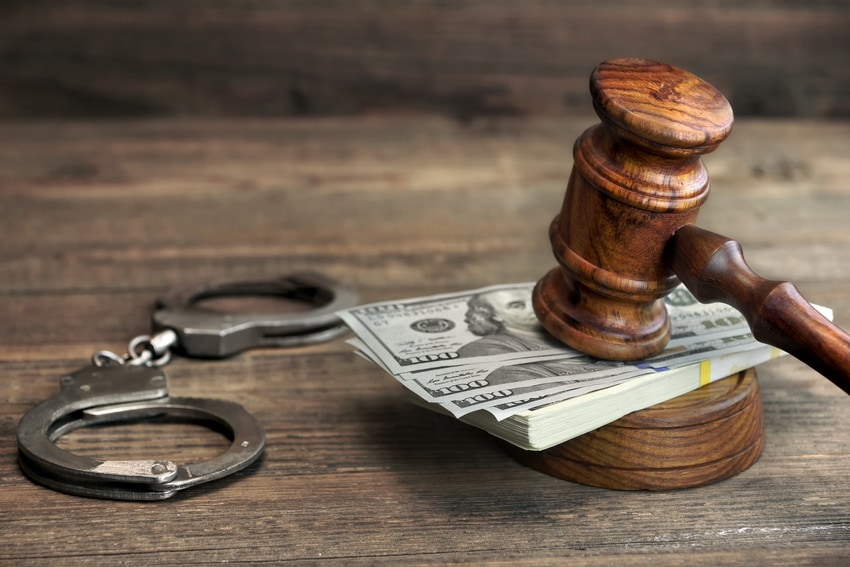Bail Bonds Canton Ohio: Fast and Dependable Bail Solutions
Bail Bonds Canton Ohio: Fast and Dependable Bail Solutions
Blog Article
Recognizing Just How a Bail Bond Works and Its Effect On the Legal Refine
The principle of a bail bond acts as an essential mechanism within the legal procedure, allowing defendants a path to safeguard their launch while awaiting test. By understanding the details of this process, including the functions of bondsman and the financial effects, one can appreciate exactly how access to bail considerably influences legal outcomes. Disparities in bail price raise pressing inquiries concerning systemic inequalities and their more comprehensive societal influence. What repercussions arise when the capacity to pay establishes one's freedom? Discovering these dimensions introduces a complicated interaction deserving of additional evaluation.
What Is a Bail Bond?
A bail bond is a lawfully binding arrangement that serves as a monetary warranty for the release of a charged individual from jail while they wait for trial. This device allows offenders to protect their momentary freedom by providing a monetary assurance to the court that they will show up for all arranged hearings - bail bond company canton ohio. The bond quantity is normally set by a judge based upon factors such as the intensity of the violation, the defendant's criminal background, and the risk of flight
bail bonds can be published by the accused or with a bondsman, that bills a non-refundable cost, normally a percentage of the complete bail quantity, in exchange for thinking the monetary risk. If the accused stops working to show up in court, the bail bond comes to be surrendered, and the court may issue a warrant for the individual's arrest. In such cases, the bondsman is usually entrusted with locating and capturing the accused to reduce their monetary loss.
Basically, bail bonds serve an important function in the judicial system by balancing the assumption of virtue with the requirement to make sure court appearances, thus helping with the defendant's right to prepare for their case beyond imprisonment.

The bail Process Explained
Navigating the bail process can commonly really feel frustrating for those not familiar with the lawful system. The bail procedure commonly starts after a person is jailed and scheduled. Now, a court will certainly establish the bail quantity, which is intended to ensure the accused's appearance at future court dates. Aspects affecting this choice include the nature of the alleged criminal activity, the offender's criminal background, and their ties to the neighborhood.
Once the bail amount is set, the defendant or their rep can select to pay the sum total in cash money, schedule a bail bond, or request a Bail hearing for a potential decrease. If a bail bond is chosen, a certified bail bondsman generally charges a non-refundable fee, typically around 10% of the complete bail amount, in exchange for assuring the court that the accused will stand for all needed proceedings.
Upon settlement, the bail bondsman will certainly publish the bail with the court, securing the offender's release. It is important for the offender to stick to all court dates; falling short to do so can result in the loss of the bail and extra lawful repercussions.
Kinds Of bail Bonds
bail bonds come in numerous types, each developed to meet different needs and circumstances within the legal structure. One of the most typical type is the surety bond, where a bondsman supplies the full bail quantity for a charge, usually 10-15% of the total bail. This setup enables accuseds to secure their release without requiring to pay the entire bail upfront.
One more kind is the cash bond, which calls for the defendant or a 3rd redirected here party to pay the complete bail quantity in cash. This choice is often preferred for its simpleness, as the cash is returned upon the offender's court appearance, minus any kind of management fees.
Home bonds entail making use of property as security for bail. The property should be valued at or above the bail quantity, and if the offender fails to appear in court, the court might confiscate the residential or commercial property.
Finally, there are government bonds, designed particularly for federal cases, which commonly lug various conditions. Recognizing these numerous kinds of bail bonds is essential for accuseds and their family members as they navigate the complexities of the lawful system. Each kind offers a distinctive objective, making certain an array of choices for securing launch from custody.

Role of bail Bonds in Legal Results
Usually neglected, the function of bail bonds dramatically affects legal end results for offenders. bail acts as a device to guarantee that people waiting for test can continue to be devoid of incarceration, thus enabling them to take part extra effectively in their defense. The schedule of bail bonds enables defendants that may not have the financial methods to upload bail straight to safeguard their launch, which can result in a lot more desirable lawful results.
When accuseds are out on bail, they have the chance to collect proof, seek advice from lawful advice, and prepare their situation without the pressures of jail confinement. This enhanced access to resources and assistance can bring about boosted opportunities of bargaining appeal offers or getting a more lenient sentence. The capacity to keep work and household connections while waiting for trial can add to a much more positive perception in court.

Effects for Accuseds and Society
The effects of the bail bond system expand past specific offenders, influencing culture overall. For numerous defendants, specifically those from lower socioeconomic backgrounds, the inability to manage bail can bring about prolonged pretrial detention. This Continued scenario frequently leads to job loss, interfered with household dynamics, and raised probability of pleading guilty to minimal charges to safeguard release, no matter of real regret.
Moreover, the social consequences are substantial (craven bail bonds canton ohio). A high dependence on bail bonds can continue inequalities in the justice system, as wealthier individuals can protect Discover More their freedom a lot more easily while poorer accuseds remain incarcerated. This disparity raises moral problems about the fairness of the legal procedure and the wider implications for public count on the justice system
In addition, pretrial detention can intensify criminal actions, contributing to greater regression rates and boosted pressure on community sources. The bail bond system, therefore, not only impacts the prompt circumstances of accuseds yet also has significant impacts on social security and public safety and security. Dealing with these ramifications is essential for creating a more equitable lawful structure that safeguards both specific rights and the broader rate of interests of society.
Final Thought
To conclude, comprehending the mechanics of bail bonds is important for browsing the legal system efficiently. The ability to safeguard momentary release from imprisonment with the payment of a bond dramatically affects legal end results for defendants, permitting much better preparation of their protection. Additionally, the effects of bail bonds prolong beyond specific cases, disclosing systemic inequalities that impact communities and add to broader social problems, such as regression and economic instability.
The idea of a bail bond serves as a critical system within the lawful procedure, permitting accuseds a pathway to safeguard their release while awaiting trial. By recognizing the complexities of this procedure, consisting of the roles of bail bondsmen and the financial implications, one can appreciate just how accessibility to bail substantially affects legal outcomes.bail bonds can be published by the offender or through a Bail bondsman, who charges a non-refundable cost, usually a percentage of the overall bail quantity, in exchange for thinking the financial risk. The most typical kind is the guaranty bond, where a Bail bondsman gives the full bail amount for a fee, typically 10-15% of the complete bail. The accessibility of bail bonds makes it possible for accuseds that might not have the financial means to post bail directly to protect their launch, which can lead to extra desirable legal outcomes.
Report this page